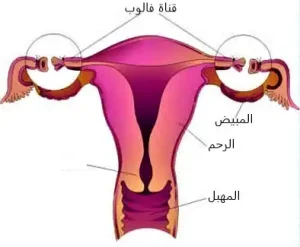قد يكون إجراء الفغر البوقي أو عكس ربط البوق، طريقة جراحية مستخدمة لعكس ربط البوق (عملية لمنع الحمل عن طريق الربط الجراحي أو حرق قناتي فالوب لمنع مرور البويضات من المبيض إلى الرحم) خيارًا للنساء في تركيا، الذين يرغبون في استعادة خصوبتهم.
ما هي نسبة نجاح عملية ربط البوق Tubal ligation reversal ؟
يعتمد نجاح إجراء الربط على عدة عوامل:
- طول وصحة أجزاء قناة فالوب المتبقية التي يتعين ضمها، ومهارة الجراح الدقيق (جراح ذو خبرة في الجراحة المجهرية)
- عمر المرأة وقت الجراحة العكسية
- طريقة التعقيم البوقي أثناء عملية ربط قناة فالوب
- تشكل نسيج ندبي في الحوض بعد عملية الربط لقناة فالوب
- نتائج اختبار الحيوانات المنوية للشريك وعوامل العقم الأخرى. يوفر إعادة فتح الأنابيب فرصة كبيرة (ولكن ليس ضمانًا) للحمل إذا كانت أنابيب المرأة سليمة ولا توجد عوامل أخرى للعقم.
في ظل الظروف المثلى، يكون معدل الحمل من 75 إلى 80 بالمائة. تتأثر هذه الفرصة للنجاح، وكذلك الوقت اللازم لتحقيق الحمل بعد جراحة فتور البوق، بالعوامل المذكورة أعلاه.
يحدث الحمل بعد فتح قنوات فالوب عادة خلال السنة الأولى.
في حال عدم حدوث حمل طبيعي فبالإمكان عندها إجراء حمل بواسطة التلقيح المجهري

على ماذا تنطوي عملية عكس ربط البوق؟
إن داء الفغرأو الربط البوقي لقناة فالوب هو عملية تستغرق ساعتين إلى ثلاث ساعات تحت تأثير التخدير العام (النوم).
عادةً ما يتم إجراء تنظير البطن (وضع منظار صغير عبر السرة) أولاً لتقييم قابلية الانعكاس في الأنابيب.
إذا كانت الظروف مناسبة، يتم إجراء قطع منطقة البكيني أو شق صغير (من جانب إلى آخر) فوق خط شعر العانة مباشرة.
يتم استخدام مجهر جراحي لربط الأطراف الصغيرة لأنبوب فالوب بخيط دقيق للغاية.
عادةً ما تكون الإقامة في المستشفى ليست ضرورية. بعد الجراحة، سيقدم أخصائي أمراض النساء والتوليد التعليمات وأدوية الألم لتتناولها في المنزل. يعود معظم المرضى إلى أنشطتهم الطبيعية في غضون أسبوعين.
ما هي مخاطر عكس ربط البوق؟
المخاطر نادرة للغاية، ولكن، كما هو الحال في أي عملية، قد تحدث مضاعفات التخدير، أو النزيف، أو العدوى، أو تلف الأعضاء الأخرى.
بعد عكس البوق، يزيد خطر الحمل خارج الرحم (الحمل البوقي) من 1 في 100، إلى 5 من كل 100 حالة حمل.
هل أنتِ مرشحة لداء الفغر البوقي؟
أنتِ مرشحة إذا لم تكن هناك موانع طبية للحمل، ولديك شرائح كافية من البوق وكان تحليل الحيوانات المنوية لشريكك أمرًا طبيعيًا. ضعي في اعتباركِ أن النساء الأكبر سنًا تقل فرص نجاحهن بشكل كبير.
بعد جراحة عكس ربط الأنبوب
يجب أن تكوني بخير للسفر في اليوم التالي للجراحة وأن تكوني قادرة على العمل بعد 3-4 أيام إلا إذا كنتِ تقومين بعمل بدني شاق للغاية.
المشاكل الخطيرة نادرة جدا.
ما هو المطلوب قبل الجراحة؟
- التاريخ الطبي والفحص البدني
- تحليل الحيوانات المنوية للشريك الذكر
- نسخ من تقرير العملية وتقارير علم الأمراض لإجراء التعقيم في وقت زيارتكِ الأولية للعيادة ستكون مفيدة
- قد يُطلب منكِ أيضًا إجراء المزيد من الأشعة السينية و / أو تحاليل الدم و / أو اختبارات الخصوبة قبل الجراحة.
تعليمات ما قبل الجراحة:
- حددي موعد الجراحة في الأسبوع التالي لنهاية دورتك الشهرية.
- لا تأكلي أو تشربي أي شيء (حتى الماء) بعد منتصف ليل يوم الجراحة.
بعد جراحة عكس ربط البوق
ستبقين في المستشفى لمدة ثلاث ساعات تقريبًا بعد الانتهاء من الجراحة. إذا لم تكوني مستعدة للعودة إلى المنزل، فيمكنك قضاء الليلة في المستشفى بدون رسوم إضافية.
يجب الامتناع عن رفع الأشياء الثقيلة، ماعدا ذلك فلن تكون هناك قيود على النظام الغذائي أو النشاط البدني. يجب أن تتناول أدويتك حسب التوجيهات الطبية.
هذه المعلومات للأغراض التعليمية فقط ولا ينبغي الاعتماد عليها كنصيحة طبية.
